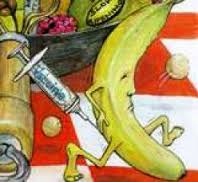GMO foods have a huge potential to make food cheaper to produce and more nutritious.
The most common GMO foods have at least one gene added to them - an enzyme that makes the plant resistant to RoundUp - an herbicide made by the same company (Monsanto). this makes the farmers able to grow their crops with much less intensive labor to keep the plants healthy. It does cost some money and people wonder whether using so much roundUp is good. I won't come down on the benefits of this, but you can see how it might be more economical way to grow crops. roundUp is biodegradable and does break down in about 3 weeks, just FYI.
Other GMO foods can make the crops more resistant to drought, disease or insects. This might enable crops to be grown in areas and or with longer growing seasons - a big advantage for thirsy crops like tomatos or rice. Other GMO project may allow us to make the crops more nutritious. A famous example of this is golden rice, which has been enhanced to produce pro-vitaminA, which will help malnutrition in millions of children who can die annually because of a lack of vitamins in their diet.
There is also an effort in nutriceuticals, where vaccines and common drugs maybe produced by edible plants for easily processing or even direct distribution of pharmaceuticals.
For people who can afford organic food and free range beef, I think its great that its available, but at for a hungry world, GMO foods can help solve some vital problems.








